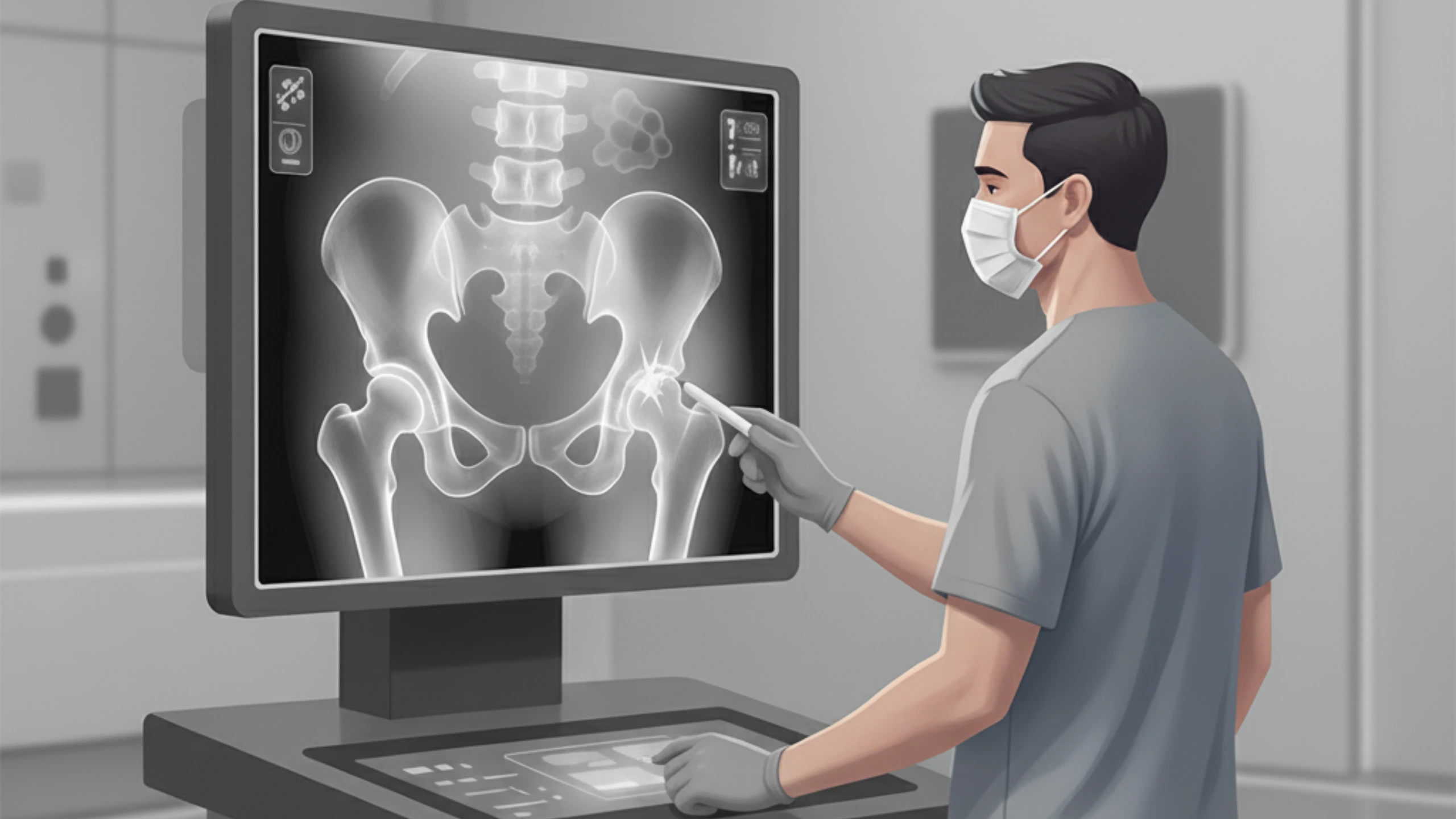
Pelvis X-Ray – Quick, Safe, and Accurate
A Pelvis X-Ray is a diagnostic imaging test that provides detailed 2D images of the pelvic bones and hip joints. At Akshar Imaging Centre, we use advanced digital radiography to ensure high-quality images with minimal radiation exposure.
What Is a Pelvis X-Ray?
A Pelvis X-Ray uses a small amount of radiation to capture images of the pelvic region, including hip bones (ilium, ischium, pubis), sacrum & coccyx, hip joints, femoral heads, lower spine connection, and bone alignment.
Why Is a Pelvis X-Ray Performed?
- Fractures or dislocations from accidents or falls
- Hip pain, stiffness, or mobility issues
- Arthritis – osteoarthritis, rheumatoid arthritis, or degenerative changes
- Bone infections or tumors
- Developmental abnormalities (e.g., hip dysplasia in children)
- Post-surgical monitoring (after hip replacement or fixation)
- Pelvic trauma assessment in emergencies
Preparation
- No special preparation required.
- Wear comfortable clothing; you may be asked to change into a gown.
- Remove metallic objects like jewelry, belts, or zippers.
- Inform the radiographer if you are pregnant or suspect pregnancy.
Procedure
- You’ll lie on the X-ray table; sometimes standing positions are taken.
- The technologist may ask you to keep your legs straight or slightly rotated.
- The X-ray captures images in seconds.
- Entire procedure usually takes 10–15 minutes.
- Painless and non-invasive.
Benefits vs. Risks
Benefits: Quick test, accurate detection of fractures/arthritis, non-invasive, minimal radiation dose.
Risks: Very small radiation exposure, avoided during pregnancy unless essential.
Why Choose Akshar Imaging Centre
- Advanced digital X-Ray equipment
- Expert radiologists for accurate reports
- Minimal waiting with prompt results
- Patient-friendly, hygienic environment
Frequently Asked Questions (FAQs)
1. How long does a Pelvis X-Ray take?
Around 10–15 minutes.
2. Is a Pelvis X-Ray safe?
Yes, it uses a very low radiation dose and is safe for most patients.
3. Can a Pelvis X-Ray detect arthritis?
Yes, it helps identify joint space narrowing, bone changes, and deformities linked to arthritis.
4. What if further detail is required?
Your doctor may recommend MRI or CT scan for advanced evaluation.
